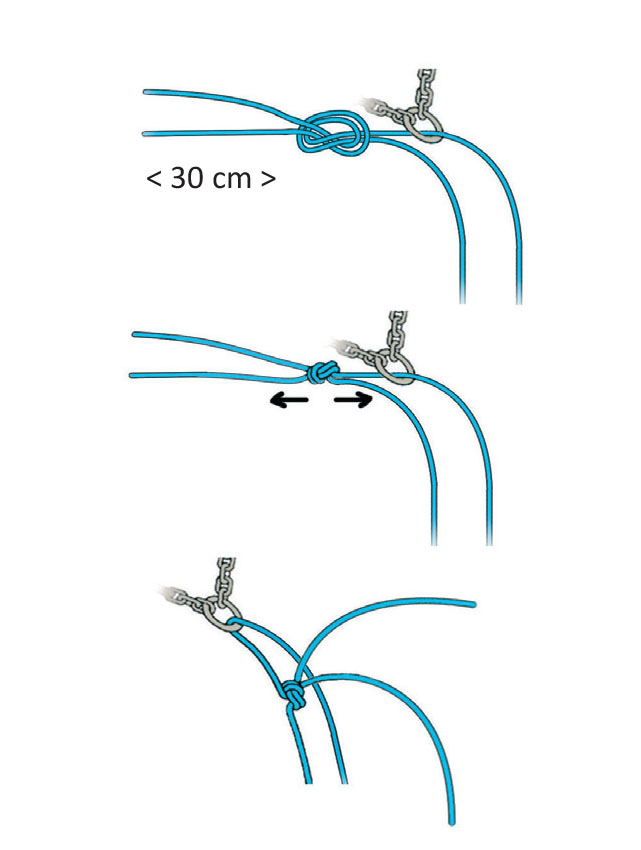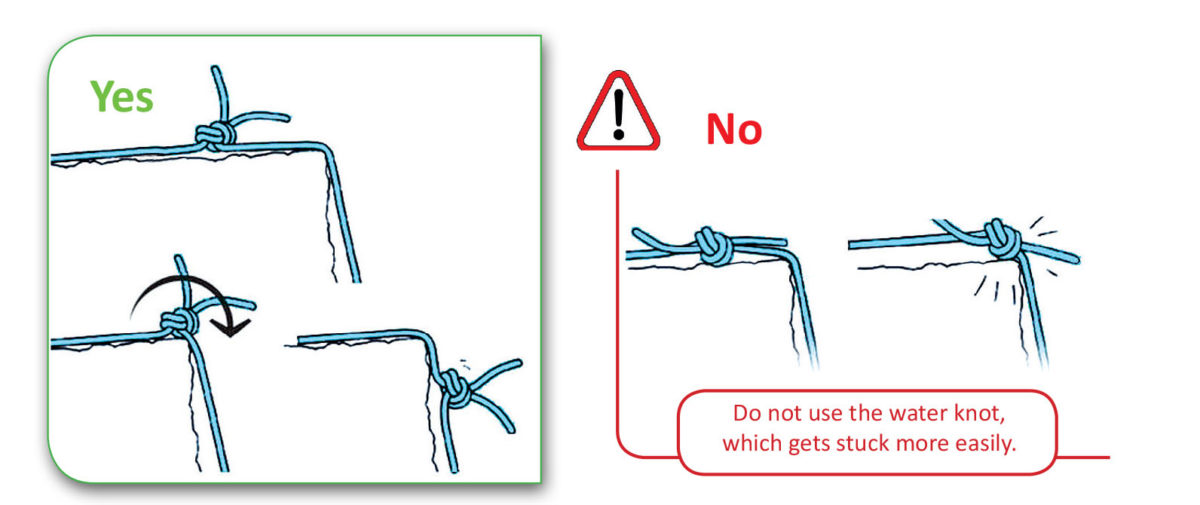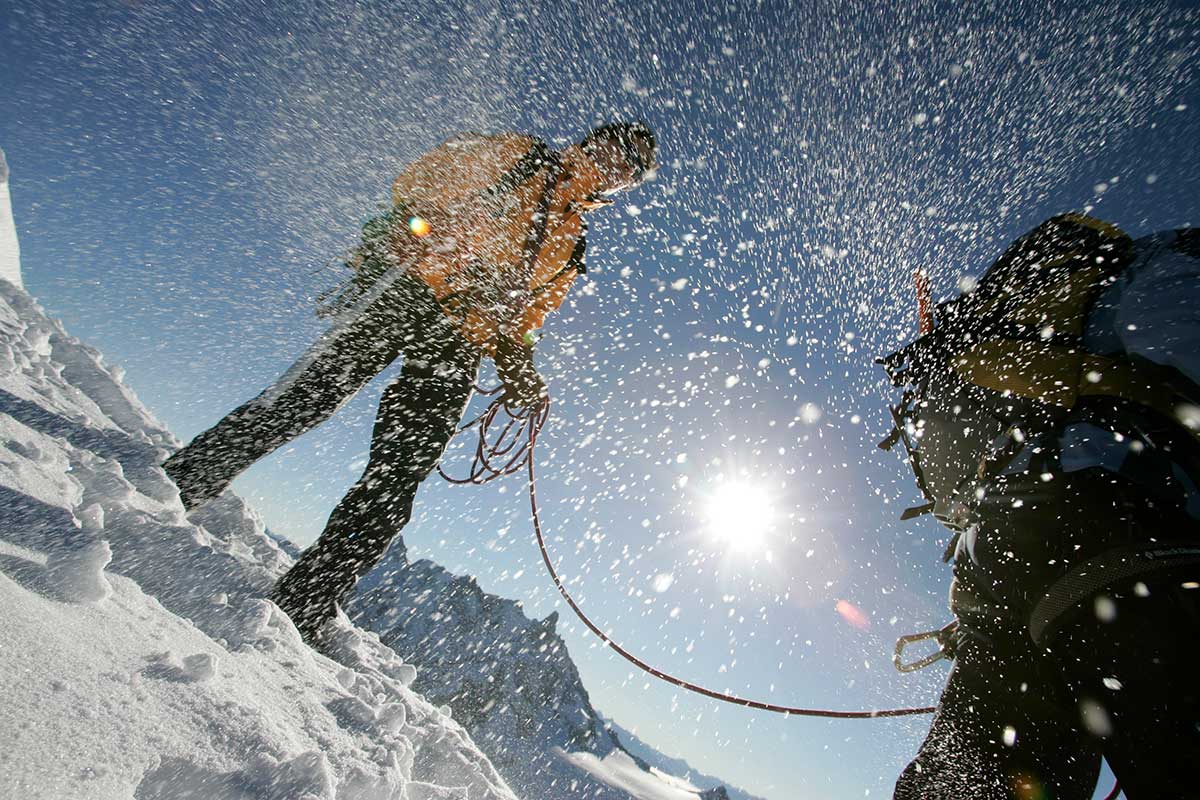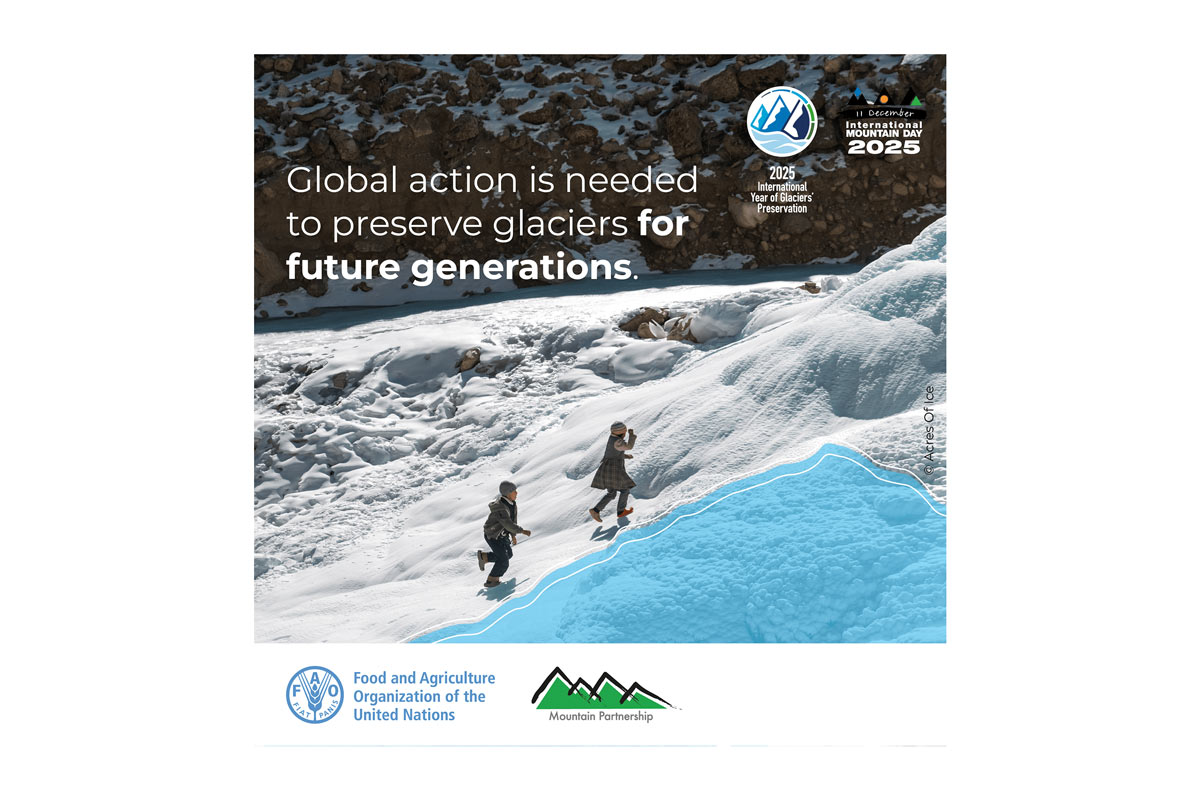The UIAA Alpine Skills Series returns with guidance on which knot to use when joining two ropes.
Climbing on two ropes allows for smoother ropework and the opportunity to divide up the load on the approach. For long rappels, you’ll tie the two ropes together. You’ll therefore need to untie from the rope(s), requiring that you first be securely tethered to the belay station.
Overhand Knot

Use an overhand knot to tie together two rappel ropes of the same diameter. Tighten the knot by pulling separately on each of the four strands, making sure you’ve left tails at least 30 cm in length, but not so long as to present danger of rappelling off the tail end.
Double Fisherman knot
Use the double fisherman knot to tie together two ropes of different diameters:
- Carefully tie the knot.
- Leave at least 20 cm tails after tightening the knot by pulling separately on each of the four strands.
It has the advantage that the two ropes are aligned, but gets stuck more easily.
 This extract comes from the Climbing section of the UIAA Alpine: Summer Skills Handbook and a dedicated chapter on crevasse rescue.
This extract comes from the Climbing section of the UIAA Alpine: Summer Skills Handbook and a dedicated chapter on crevasse rescue.
Previous extracts from the UIAA Alpine Summer Skills Guide can be found on our dedicated Skills page.
To purchase a digital copy of guide in English (current price 3.99 GBP) click here.
About the UIAA Alpine Skills Summer Guide
The UIAA Alpine Skills Summer guide was first published in 2015. Produced in collaboration with the Petzl Foundation, the guide and has been well received worldwide and is currently available in five languages. To mark the launch of a digital version of the publication, the UIAA is running a series of articles from the guide designed to help hikers, climbers and mountaineers develop their skills and knowledge of the mountain environment.
The guide was developed specifically as a reference document for trip leaders and instructors of club and federations within the UIAA – an aide memoire for climbers and mountaineers who attend training courses delivered by instructors and guides who have gained qualifications accredited by the UIAA. Now open to the wider climbing and mountaineering world, the handbook’s four modules focus primarily on summer activities. However, a specific winter guide is currently in production.
Main photo: Monica Dalmasso



